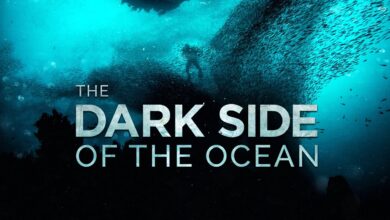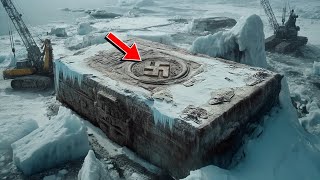The Strange DNA of the last mammoths

**Introduction:** This video shows the excavation of mammoth tusks from one of the last elephants on Earth. Researchers were excited to find these tusks right where they fell thousands of years ago. It feels like traveling back in time, taking viewers back to the Ice Age.
**Historical background:** About 20,000 years ago, mammoths once roamed widely from North America to Ireland. But 10,000 years ago, after a major population decline, the species survived only on Wrangel Island – a deserted island where mammoths survived for another 6,000 years before becoming extinct.
**Genetic research:** Dr. Marianne Dehasque, a geneticist at Uppsala University, was involved in the study of mammoth genome degeneration. The team sequenced the genomes of 21 elephant samples, of which 7 came from mammoths on the mainland. The results showed that the mammoths maintained a stable genome through many climate changes.
**Environmental conditions:** Wrangel Island is a harsh place with low temperatures and frequent snowstorms. However, these harsh conditions helped preserve the mammoth fossils. The team processed hundreds of samples in the lab to select those with the best DNA.
**Genome surprises:** Surprisingly, samples from the mainland and Wrangel Island showed little sign of climate change. However, when the mainland mammoths disappeared about 12,000 years ago, the researchers suspect that a combination of climate change and human hunting pushed them to the brink of extinction.
**Migration and isolation:** As sea levels rose, Wrangel Island separated from the mainland about 10,000 years ago, isolating a small group of mammoths on the island. The team estimates that only about eight original breeding individuals who established the population survived on the island for 6,000 years.
**Inbreeding effects:** Due to the small population, mammoths on the island faced a phenomenon called genome erosion, which reduced genetic diversity. This led to serious consequences such as reducing the species’ ability to survive and develop.
**Conclusion:** The study suggests that the extinction of mammoths was the result of a combination of factors, including climate change and human impact. However, the discovery that mammoths maintained a stable genome over many millennia changes the way we think about their extinction process. This suggests that there may be more discoveries to be made from the land that is now under the sea.

1. **Extinction of the Wrangel Island Mammoths:**
– Unlike the mammoths on the Asian mainland, the last mammoths on Wrangel Island showed no signs of human hunting. Their bones were scattered naturally, without any cut marks or strange arrangements.
– There was no art, tools, or unusual accumulations associated with mammoths on the island.
– Archaeological sites indicate that humans arrived on the island after the mammoths had become extinct.
2. **Information from archaeology:**
– The Chertov Ovrag archaeological site is the oldest evidence of human presence on the island, dating back about 400 years to the extinction of the mammoths.
– No mammoth bones were found at the site; instead, they hunted geese, seals, and walruses. Stone tools were also found, but there was no sign of mammoth hunting.
3. **Theories about the cause of extinction:**
– Although the mammoths recovered from the period of population decline, they still disappeared suddenly. Theories include:
– **Disease:** It is possible that a bird virus attacked the entire population.
– **Extreme weather:** One or two extremely harsh winters left them short of food.
– **Great fires:** Unusual environmental events such as fires may have contributed to this extinction.
4. **Thinking about the existence of mammoths:**
– Mammoths survived until the time of the construction of the Great Pyramid and only became extinct about 600 years later, almost hitting the collapse of the Bronze Age. The narrator humorously wonders if the “Sea People” had anything to do with this extinction.
5. **Current lessons and messages:**
– The existence of mammoths shows that animals can recover from small populations if protected in time. This is a message of hope for today’s animals such as tigers, rhinos and elephants.
– The presenter emphasizes that we need to act to save animals before it is too late, to avoid regretting in the future that they “almost” survived our time.
6. **Concrete actions and calls to action:**
– The presenter donated to WWF and adopted two tigers, as a way of committing to practical action. He joked that mammoths would not mind his donation to a predator.
– At the end of the video, he thanked the audience and expressed his hope that we still have time to save endangered animals.








